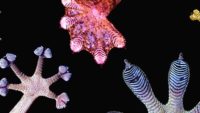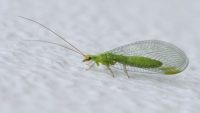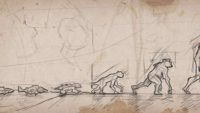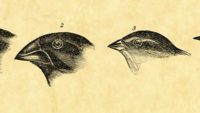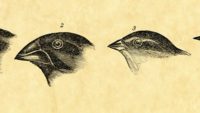Hagfish look creepy. They can act creepy, too. Having no bones, they tie themselves into sliding figure eight knots that help them tear mouthfuls of flesh from the seafloor carcasses on which they feed. And don’t squeeze one unless you want an armload of instantly-expanding slime. Unique slime glands positioned along the sides of their long, slender bodies eject slime-making proteins that fill the gills of would-be predators. A newly … More… …read more Source: icr.org
Can happen faster than secular scientists think. …read more Source: creation.com
Killifish have been found living in polluted rivers with levels of industrial toxins 8,000 times the lethal dose. …read more Source: creation.com
By Ken Ham Today many Christian leaders argue that the fossil record preceded Adam by millions of years. …read more Source: AIG Daily
The male reproductive system is not poorly designed. Read Article
A tiny, amazing, colorful arachnid ‘struts’ around like the bird after which it is named. Read Article
By Laura Allnutt The penguin is a common favorite among children and adults, bird lovers, and cartoonists. Here are some fun facts about a fun bird on Penguin Awareness Day. …read more Source: AIG Daily
By Harry F. Sanders, III Since an increase of information is needed for molecules-to-man evolution, evolutionists postulate polyploidy as a means for this. …read more Source: AIG Daily
By Dr. Danny R. Faulkner A recent news story reported on the latest measurement of Saturn’s rotation rate. This is significantly shorter than what is found in most astronomy textbooks. …read more Source: AIG Daily
By Melinda Christian Scientists have long tried to understand how geckos can walk on walls and ceilings, even on smooth glass. …read more Source: AIG Daily
By Troy Lacey Two amber fossil finds have revealed some interesting examples of similarities between fossil and extant forms, both in morphology and in lifestyle/behavior. …read more Source: AIG Daily
On January 21, 2019, during a total lunar eclipse, astronomers and amateur stargazers alike saw a small meteorite strike the lunar surface.1 The collision was seen as a flash of light just before midnight Eastern Time. The darkened surface of the moon during the eclipse made the flash much easier to see. Although scientists have observed and recorded other meteorite strikes on the lunar surface, this is apparently the first time … More… …read more Source: icr.org
By Harry F. Sanders, III Modern classification is largely dependent on a technique known as cladistics. …read more Source: AIG Daily
Think of all the jobs that our good working sense of smell fulfills. First, the nose detects a chemical—the source of the scent. It distinguishes that scent from literally billions of others. Our sense of smell even gauges the strength of the scent. Finally, the sense rapidly scans memories of past smells to interpret the odor’s level of pleasure or toxicity or something in between. Human engineers would need a large lab full of… More… …read more Source: icr.org
The junk DNA paradigm has proven to be an ill-founded icon of evolution. We’ve witnessed its pet sub-theories systematically debunked as we learn more and more about how creatures’ DNA systems work. And now one of the pet darlings of junk DNA speculation, the alleged useless nature of introns (intervening noncoding pieces of genes), has also been tossed in the evolutionary trash heap. When scientists first… More… …read more Source: icr.org
Sneak peek of latest Creation magazine.’Extreme’ living fossils shout ‘after their kind’ …read more Source: creation.com
By Dr. Jason Lisle My paper was criticizing what Guliuzza has publicly written in which he denies the reality of natural selection: a claim that he has never publicly retracted. …read more Source: AIG Daily
By Dr. Jean Lightner This brief examination of Jason Lisle’s paper highlights that misunderstanding about natural selection is more prevalent among creationists than he suggests. …read more Source: AIG Daily
Jeffrey P. Tomkins, Ph.D. and Timothy L. Clarey, Ph.D. Red algae form one of the main components of coral reefs and were originally thought to have appeared on Earth during the middle of the Cretaceous system about 100 million years ago. At least that’s what the standard evolutionary story claimed until the same type of fossils were just discovered in Silurian system roc… More… …read more Source: icr.org
There is more than one view among evolutionary researchers on how new biological structures arise. …read more Source: creation.com
By Dr. Danny R. Faulkner Flat-earthers often claim that moonlight has a cooling property. I present the results of three independent experiments that test this claim. …read more Source: AIG Daily
The recent discovery of thirty new exoplanets in other solar systems presents another challenge to the most popular secular theory of planet formation.1,2 These exoplanets are smaller versions of our gas giant Saturn. A recent survey shows that these intermediate gas giants are ten times more common than predicted by the secular theory.3 One of these intermediate gas giants, designated O… More… …read more Source: icr.org
By Dr. Danny R. Faulkner What do lunar eclipses tell us about flat earth? Lunar eclipses remain the best method for most people to see for themselves that the earth is a sphere. …read more Source: AIG Daily
Can genuine Evangelicals really come to some agreement? …read more Source: creation.com
Saturn’s gravity keeps vacuuming up its own stunning rings. NASA scientists have estimated how fast this process happens. The rings lose six Olympic-sized swimming pools-worth of material every hour according to new results from NASA’s Goddard Space Flight Center.1 For this and other reasons, scientists have concluded that the rings are unlikely to be more than 100 million years old. These rings look young, forcing sc… More… …read more Source: icr.org
by Frank Sherwin and Jeff Tomkins, Ph.D. Australian and American zoologists discovered a new species of shark.1Carcharhinus obsolerus was discovered off the coast of South East Asia but has not been found anywhere in the past eight decades. Based on the morphology of the find’s teeth and fins, researchers have concluded it’s a new species of shark, but … More… …read more Source: icr.org
Secular geologists have long claimed that oil can survive millions of years underground because it somehow becomes pasteurized at 80 oC (176 oF), preventing further biodegradation.1 These geologists argue that oil can be preserved for millions of years because the subsurface temperatures are simply too hot for microbial activity. And once the oil is pasteurized (heated enough to destroy microorganisms) and t… More… …read more Source: icr.org



























